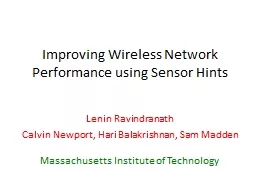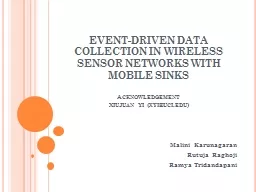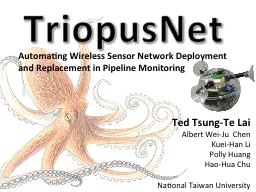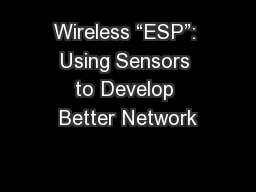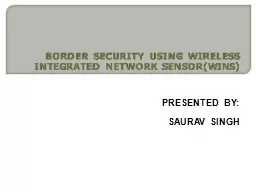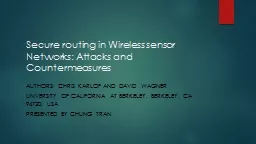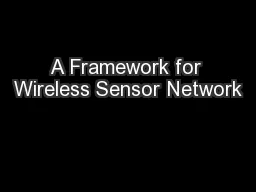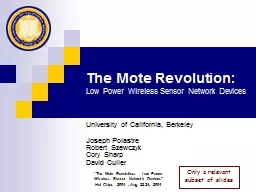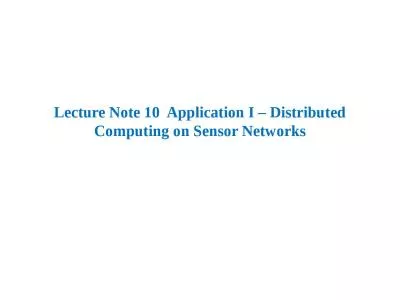PPT-Improving Wireless Network Performance using Sensor Hints
Author : karlyn-bohler | Published Date : 2016-11-01
Lenin Ravindranath Calvin Newport Hari Balakrishnan Sam Madden Massachusetts Institute of Technology Big Changes in Access Devices 297M smartphones sold worldwide
Presentation Embed Code
Download Presentation
Download Presentation The PPT/PDF document "Improving Wireless Network Performance u..." is the property of its rightful owner. Permission is granted to download and print the materials on this website for personal, non-commercial use only, and to display it on your personal computer provided you do not modify the materials and that you retain all copyright notices contained in the materials. By downloading content from our website, you accept the terms of this agreement.
Improving Wireless Network Performance using Sensor Hints: Transcript
Download Rules Of Document
"Improving Wireless Network Performance using Sensor Hints"The content belongs to its owner. You may download and print it for personal use, without modification, and keep all copyright notices. By downloading, you agree to these terms.
Related Documents

